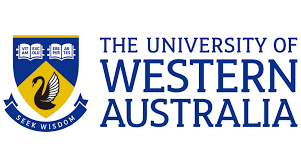University of Western Australia: Researchers plot the fastest routes for Port to Pub Swim
A group of scientists from The University of Western Australia Oceans Graduate School and School of Human Sciences have combined their expertise in weather conditions, oceanography and sports science to develop the best routes for swimmers participating in Perth’s Port to Pub swim.
The routes have been designed to help swimmers of all levels complete the channel crossing and will be available on the course map section of the Port to Pub website on Friday 19 March.
Port to Pub is an open-water swim between Fremantle and Rottnest designed for those with a keen interest in long-distance swimming and can be challenging for even the strongest swimmers.
“We have been looking at how wave pressures affect how fast swimmers can swim and then applying this to an engineering model of how swimmers progress through the water.”
PhD student Terry Griffiths
Port to Pub comprises of two races from Leighton Beach to Rottnest Island. The first is a 19.7-kilometre direct swim across the Rottnest Channel for solos and teams of two, four and six swimmers. The second is a 25-kilometre marathon solo swim, which is one of the longest open water swims in Australia and open only to qualified swimmers. More than 1500 swimmers are competing in Saturday’s event.
Researchers from UWA’s Oceans Graduate School and School of Human Sciences combined their expertise to develop the route.
UWA Oceans Graduate School PhD student Terry Griffiths said the researchers had spent the past few years investigating the effects of waves and currents on open-water swimmers, to understand how the human body interacts with the ocean.
“Now we’re using facilities at UWA’s Coastal and Offshore Engineering Laboratory that includes a 50-metre long wave flume where we have been testing how swimmers respond to water conditions and the stresses of waves,” Mr Griffiths said.
“We have been looking at how wave pressures affect how fast swimmers can swim and then applying this to an engineering model of how swimmers progress through the water.”
The team used the 50-metre long wave flume at UWA’s Coastal and Offshore Engineering Laboratory to understand the effects of waves.
“On Friday, we will combine the modelling with oceanographic model predictions the day before the swim, to come up with the best route.
“We’re hoping this modelling will become a really powerful tool not only for community swims like the Port to Pub swim, but also for things like the open water swimming in the Olympic Games.”
Dr Grant Landers from UWA’s School of Human Sciences said the team was keen to help people maximise their performance, no matter what their level.
“Preparation for the Port to Pub swim really is the key, with training in the lead up to the event essential,” he said.
“It’s also important for swimmers to practise how to swim in waves and in different conditions to enhance the crossing experience.”
The ocean modelling will be developed by Ivica Janekovic from the UWA Oceans Graduate School. UWA researchers Justin Geldard, George Ellwood, Nat Benjanuvatra and Scott Draper have also contributed.

